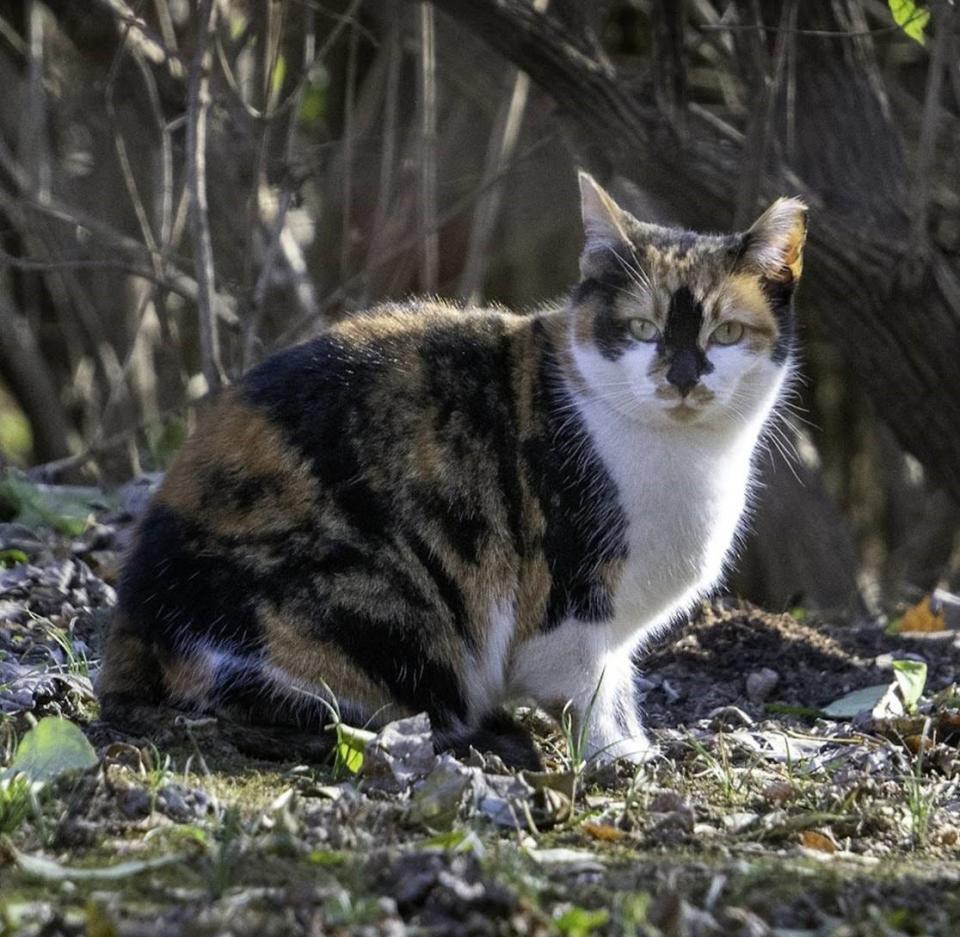Feral, free-roaming cats upset bird populations. Here's how Hoosiers can help
Feral and free-roaming cats can be a neighborhood nuisance and a bane for wildlife populations, with estimates that billions of songbirds have fallen prey to cats each year.
Cats have a natural hunting instinct that can disrupt ecosystems by killing birds, which can lead to imbalances in predator-prey dynamics, Indiana Audubon’s Whitney Yoerger said.
Program helps control cat population
Indianapolis established a community cat program through ordinances in 2016 that “encourage(s) the stabilization of the free-roaming cat population in the city by utilizing a trap, neuter, and return methodology.”
This allows Indy residents to humanely trap cats in a live release device so they may have the cat evaluated, surgically sterilized and vaccinated before being released back where it came from.

Ins and outs of Trap, Neuter, Release
The Indy Neighborhood Cats organization, funded in part by the Nina Mason Pulliam Charitable Trust, has focused exclusively on a trap, neuter, release program for the past four-and-a-half years, its executive director. Dawn Benefiel said.
“When the first ordinances were initiated, there was very little resource for low cost, spay and neuter clinic, access to trapping cats and getting them fixed,” Benefiel said. “Within a few years our success rates went from 18% in 2003 to release rates of 88% in 2019.”
Indy residents who notice free-roaming cats in their neighborhood can contact Indy Neighborhood Cats, and its volunteers will log the sightings on a mapping system much like the city’s resource for potholes, Benefiel said.
The organization and its veterinary partners will clip the left ear of a trapped cat so residents know it has already gone through the program.
The organization works in certain areas under a targeted program to reduce the cat populations outside, Benefiel said.
Meet Pirate Cat: Monon's most hornswaggling pillager
There currently are 5,000 cats on the organization’s waitlist that have been reported. Still, Benefiel said if residents need help with these cats, they can call or fill out a form online.
Trap, neuter, release in conjunction with available funding for cat food and shelter will help control those outdoor cat populations, Benefiel said.
Indy Neighborhood Cats can be reached by phone at 317-386-6916 or online at indyneighborhoodcats.org.
Resources for Indy's community cats
If there is a sick or injured stray in your neighborhood, alert the city at request.indy.gov/citizen/home
If residents have cats outside that need to be fixed and can transport and cover costs on their own: FACE Low-Cost Animal Clinic provide a surgery package for community cats: To get information/appointments they need to call FACE at: 317-638-3223.
IndyHumane Downtown Clinic offers community cat surgery to the public. Residents can book on the website: indyhumane.org/clinics/spay-neuter-clinics
Low-cost spay and neuter clinics can be found in Brownsburg and Noblesville. Both offer community cat surgery to the public with no appointment and can lend out traps with a deposit. More info at: lowcostspayandneuterindiana.org.
Calls for a more robust management plan
Benefiel and other trap, neuter, release advocates say the system will work to lower free-roaming cat populations through attrition since they’re no longer capable of breeding, but other groups remain uncertain.
Yoerger, with Indiana Audubon, said rather than “relying solely on Trap-Neuter-Release (TNR) programs, which lack robust scientific evidence of effectiveness,” other options are available to augment that program.
Outdoor cats not only kill songbirds, but Yoerger said they transmit disease and parasites that can harm both humans and wildlife.
Another option to protect wildlife is to create private shelters for the cats.
“… fully enclosed stray and feral cat sanctuaries on private property provide safe shelter and sustenance for cats without posing risks to wildlife,” Yoerger said.
Indy Neighborhood Cats provides cat food and warm shelters, but those aren't fully enclosed on private property.
Indy’s Community Cat ordinances revolve around the trap and release programs, but Yoerger advocated for broader rules the require cat owners to register their pets and keep them indoors.
“Prioritizing responsible cat ownership practices is crucial,” Yoerger said.
Karl Schneider is an IndyStar environment reporter. You can reach him at karl.schneider@indystar.com. Follow him on Twitter @karlstartswithk
IndyStar's environmental reporting project is made possible through the generous support of the nonprofit Nina Mason Pulliam Charitable Trust.
This article originally appeared on Indianapolis Star: How advocates are working to lower the Indianapolis feral cat population

